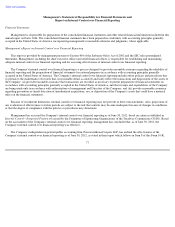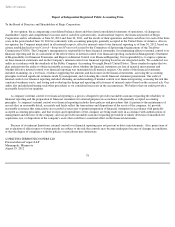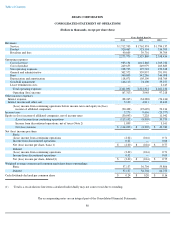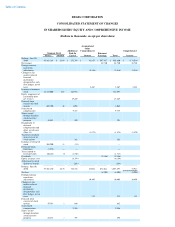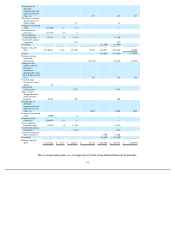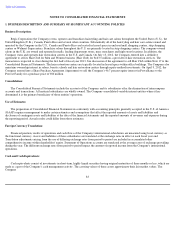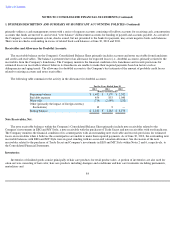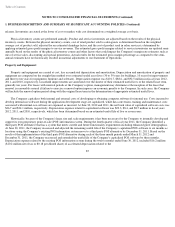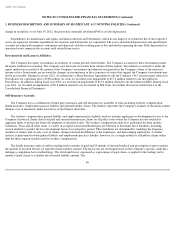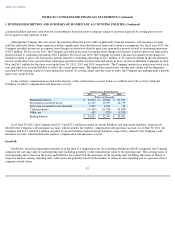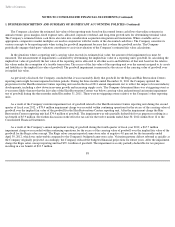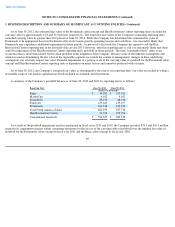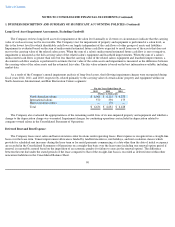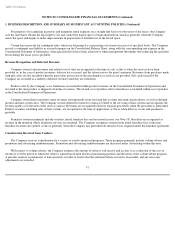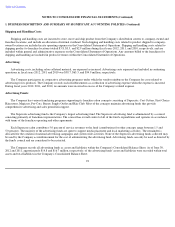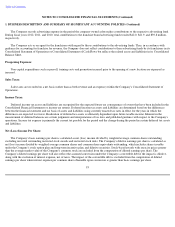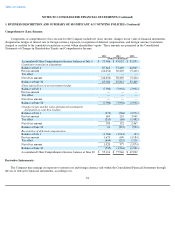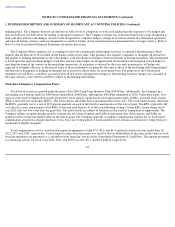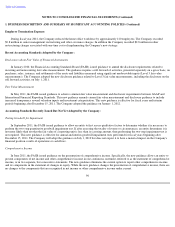Supercuts 2012 Annual Report Download - page 89
Download and view the complete annual report
Please find page 89 of the 2012 Supercuts annual report below. You can navigate through the pages in the report by either clicking on the pages listed below, or by using the keyword search tool below to find specific information within the annual report.
Table of Contents
NOTES TO CONSOLIDATED FINANCIAL STATEMENTS (Continued)
1. BUSINESS DESCRIPTION AND SUMMARY OF SIGNIFICANT ACCOUNTING POLICIES (Continued)
change in useful life. As of June 30, 2012, the previously internally developed POS was fully depreciated.
Expenditures for maintenance and repairs and minor renewals and betterments, which do not improve or extend the life of the respective
assets are expensed. All other expenditures for renewals and betterments are capitalized. The assets and related depreciation and amortization
accounts are adjusted for property retirements and disposals with the resulting gain or loss included in operating income. Fully depreciated or
amortized assets remain in the accounts until retired from service.
Investment In and Loans to Affiliates:
The Company has equity investments in securities of certain privately held entities. The Company accounts for these investments under
the equity method of accounting. The Company also has loans receivable from certain of these entities. Investments accounted for under the
equity method are recorded at the amount of the Company's investment and adjusted each period for the Company's share of the investee's
income or loss. Investments are reviewed for changes in circumstance or the occurrence of events that suggest the Company's investment may
not be recoverable. During fiscal year 2012, we entered into a Share Purchase Agreement to sell the Company's 46.7 percent equity interest in
Provalliance for a purchase price of €80 million. As such, we recorded a net impairment of $17.2 million related to our investment in
Provalliance. In addition, during fiscal year 2012, we recorded an impairment of $19.4 million related to our investment in EEG. During fiscal
year 2011, we recorded an impairment of $9.2 million related to our investment in MY Style. See further discussion within Note 6 to the
Consolidated Financial Statements.
Self-Insurance Accruals:
The Company uses a combination of third party insurance and self-insurance for a number of risks including workers' compensation,
health insurance, employment practice liability and general liability claims. The liability represents the Company's estimate of the undiscounted
ultimate cost of uninsured claims incurred as of the balance sheet date.
The workers' compensation, general liability and employment practice liability analysis includes applying loss development factors to the
Company's historical claims data (total paid and incurred amounts per claim) for all policy years where the Company has not reached its
aggregate limits to project the future development of incurred claims. The workers' compensation analysis is performed for three models;
California, Texas and all other states. A variety of accepted actuarial methodologies are followed to determine these liabilities, including
several methods to predict the loss development factors for each policy period. These liabilities are determined by modeling the frequency
(number of claims) and severity (cost of claims), fitting statistical distributions to the experience, and then running simulations. A similar
analysis is performed for both general liability and employment practices liability; however, it is a single model for all liability claims rather
than the three separate models used for workers' compensation.
The health insurance analysis utilizes trailing twelve months of paid and 24 months of incurred medical and prescription claims to project
the amount of incurred but not yet reported claims liability amount. The lag factors are developed based on the Company's specific claim data
utilizing a completion factor methodology. The developed factor, expressed as a percentage of paid claims, is applied to the trailing twelve
months of paid claims to calculate the estimated liability amount. The
86


